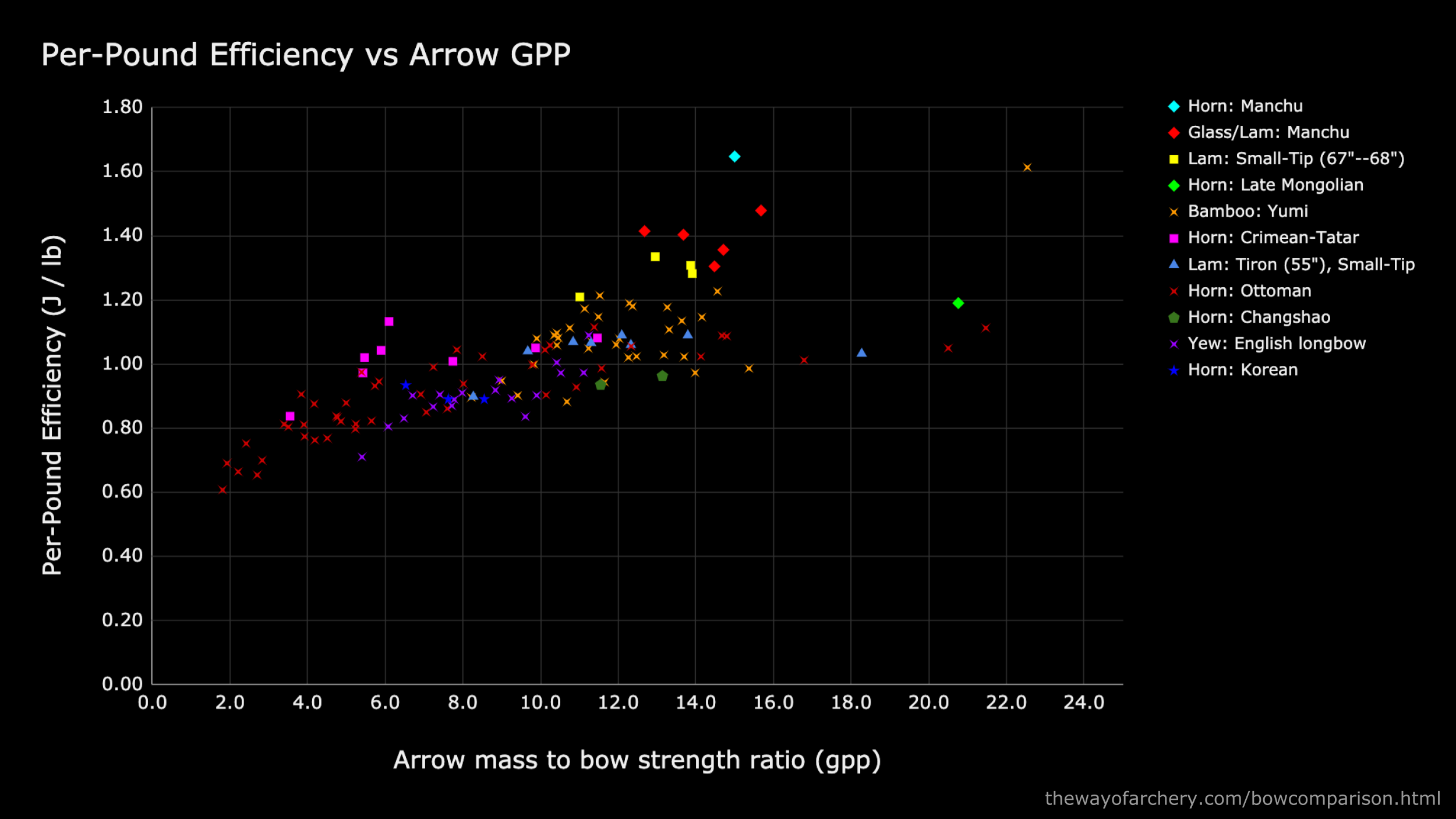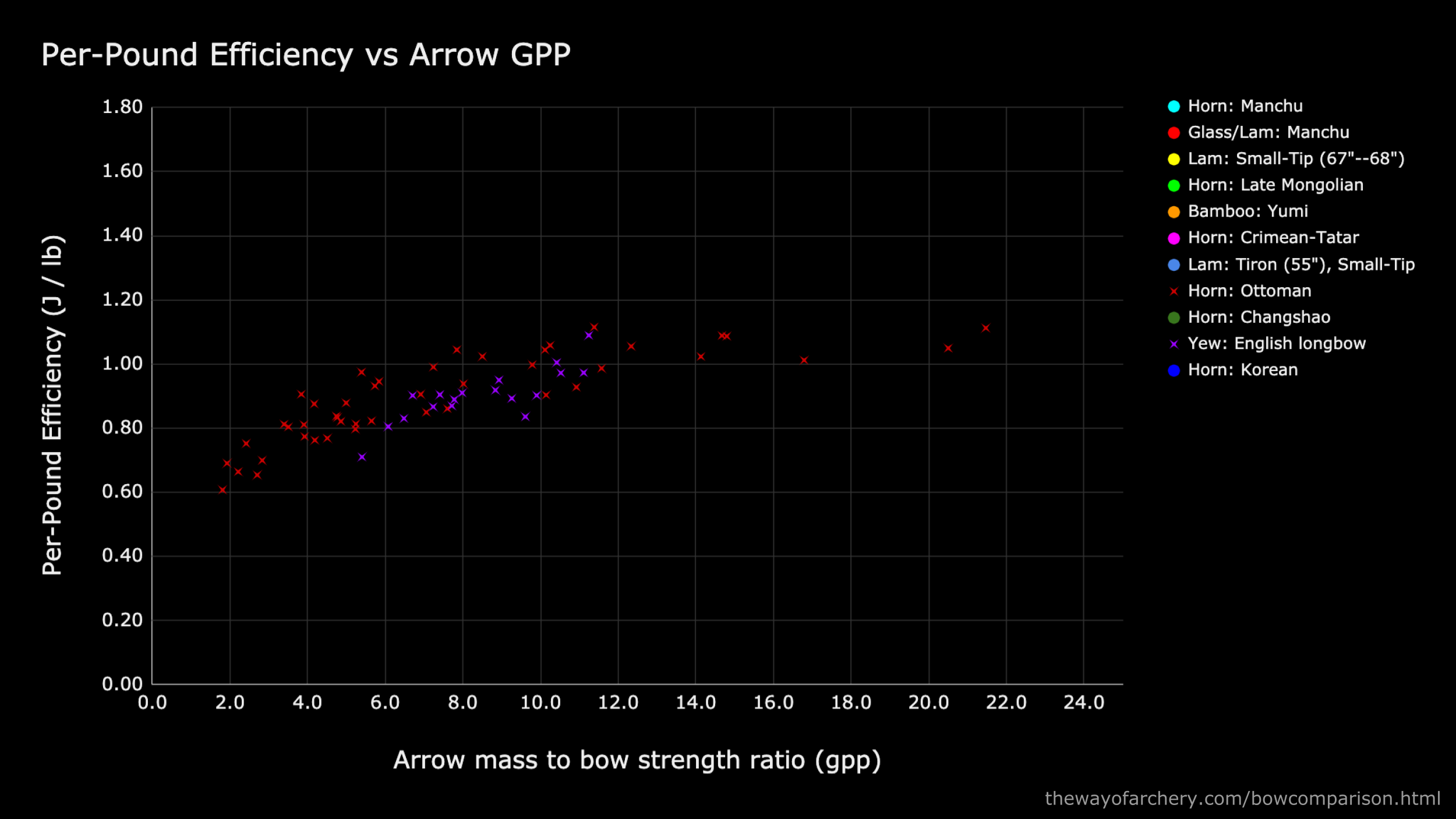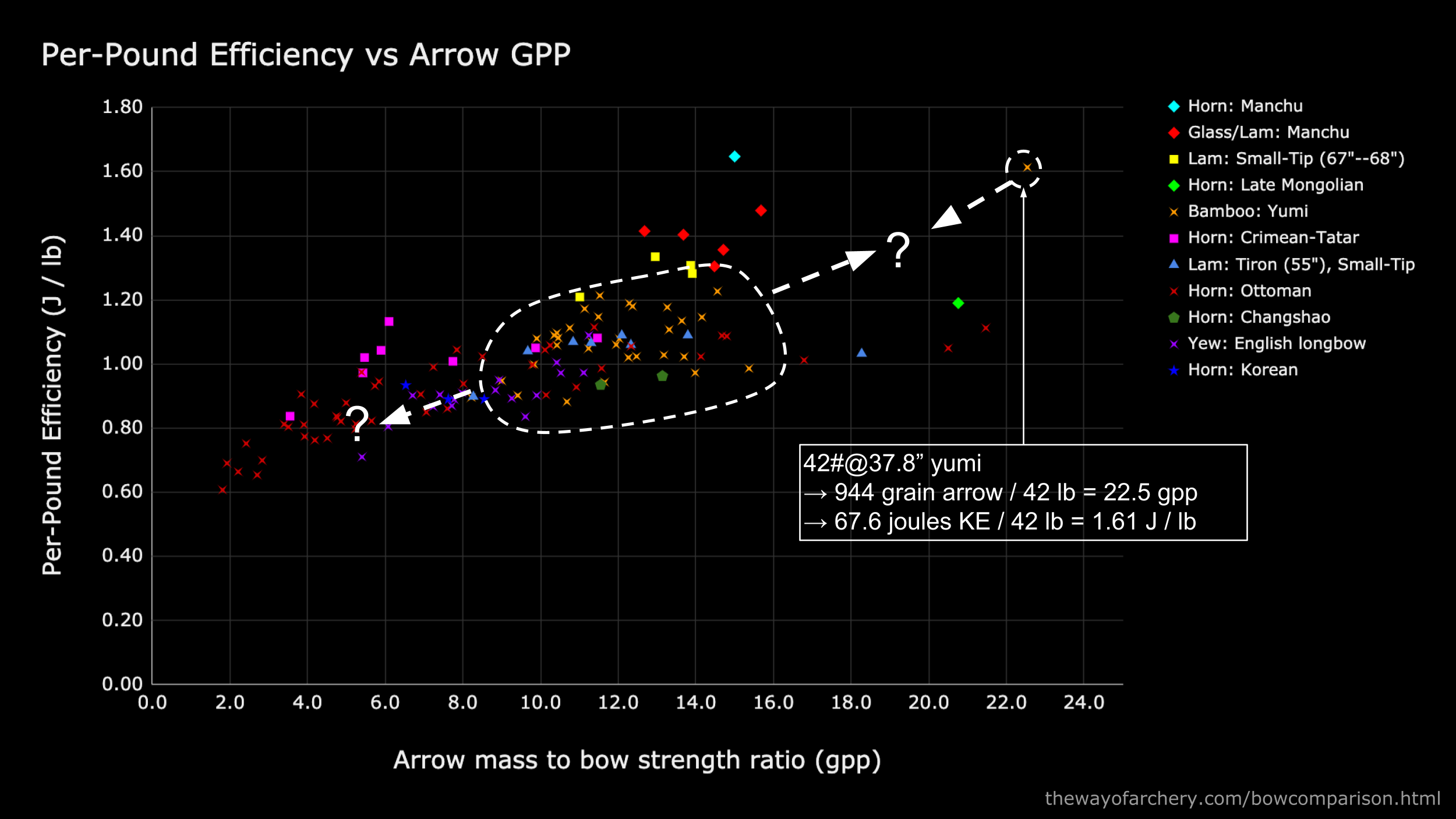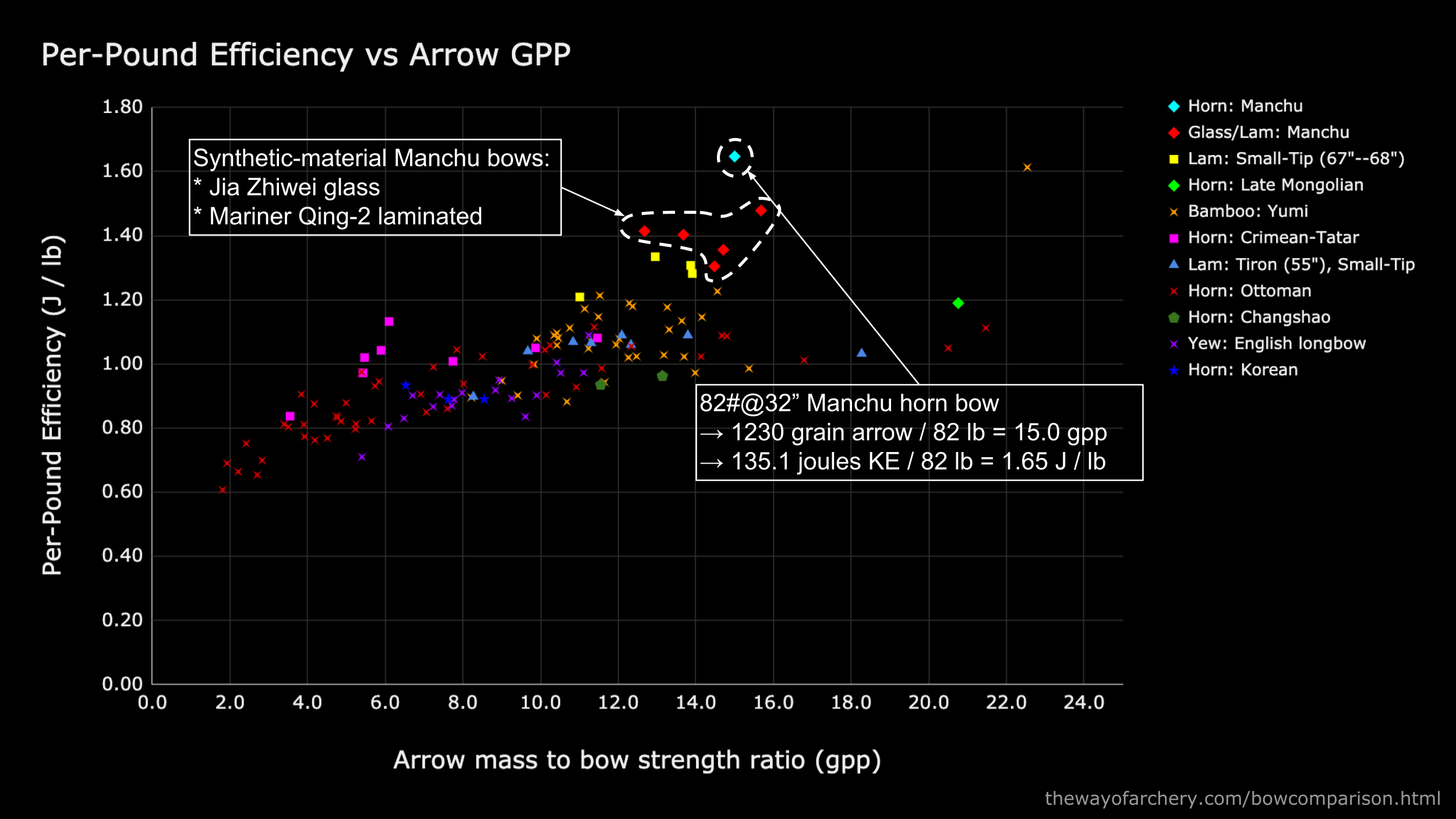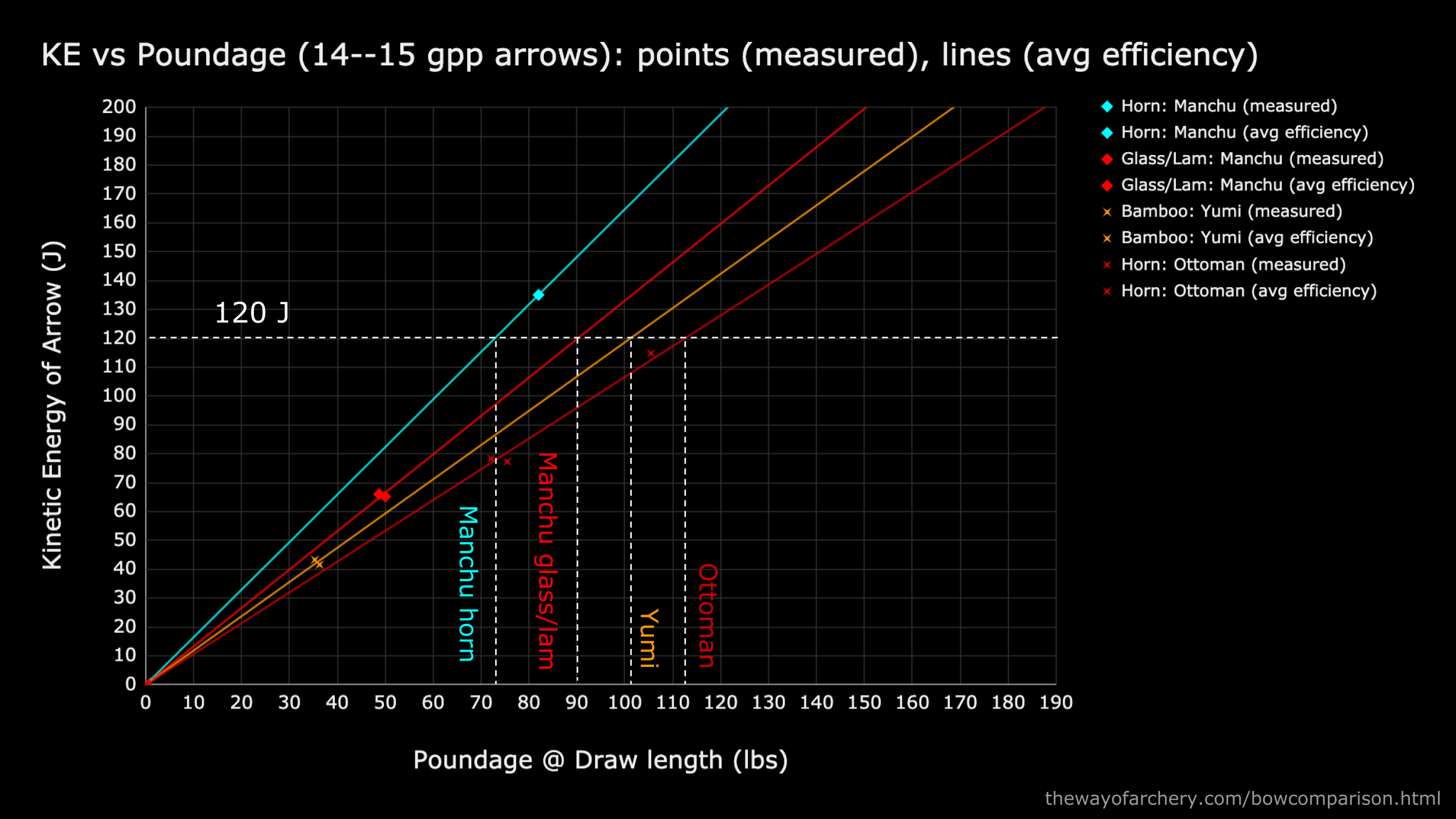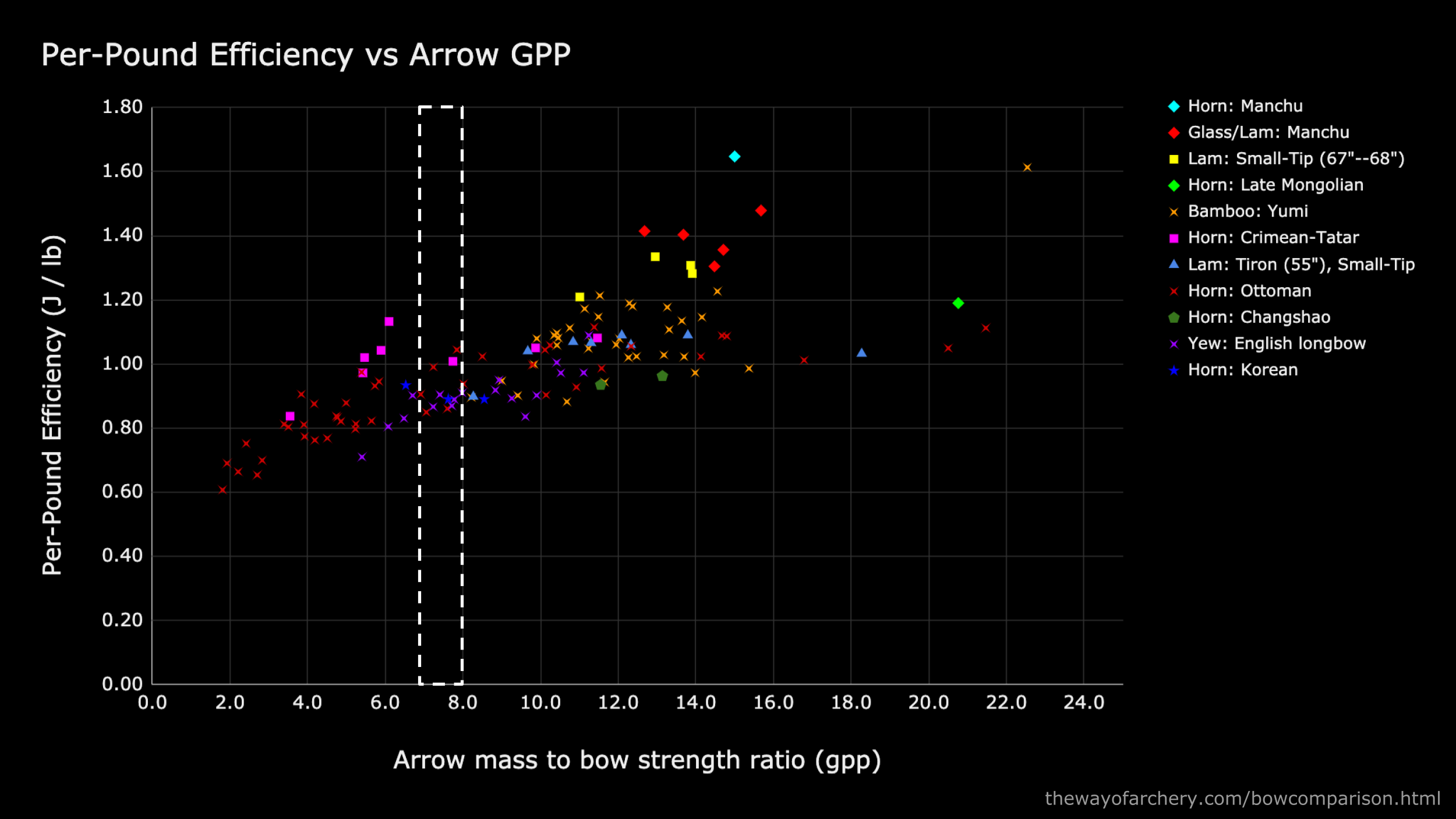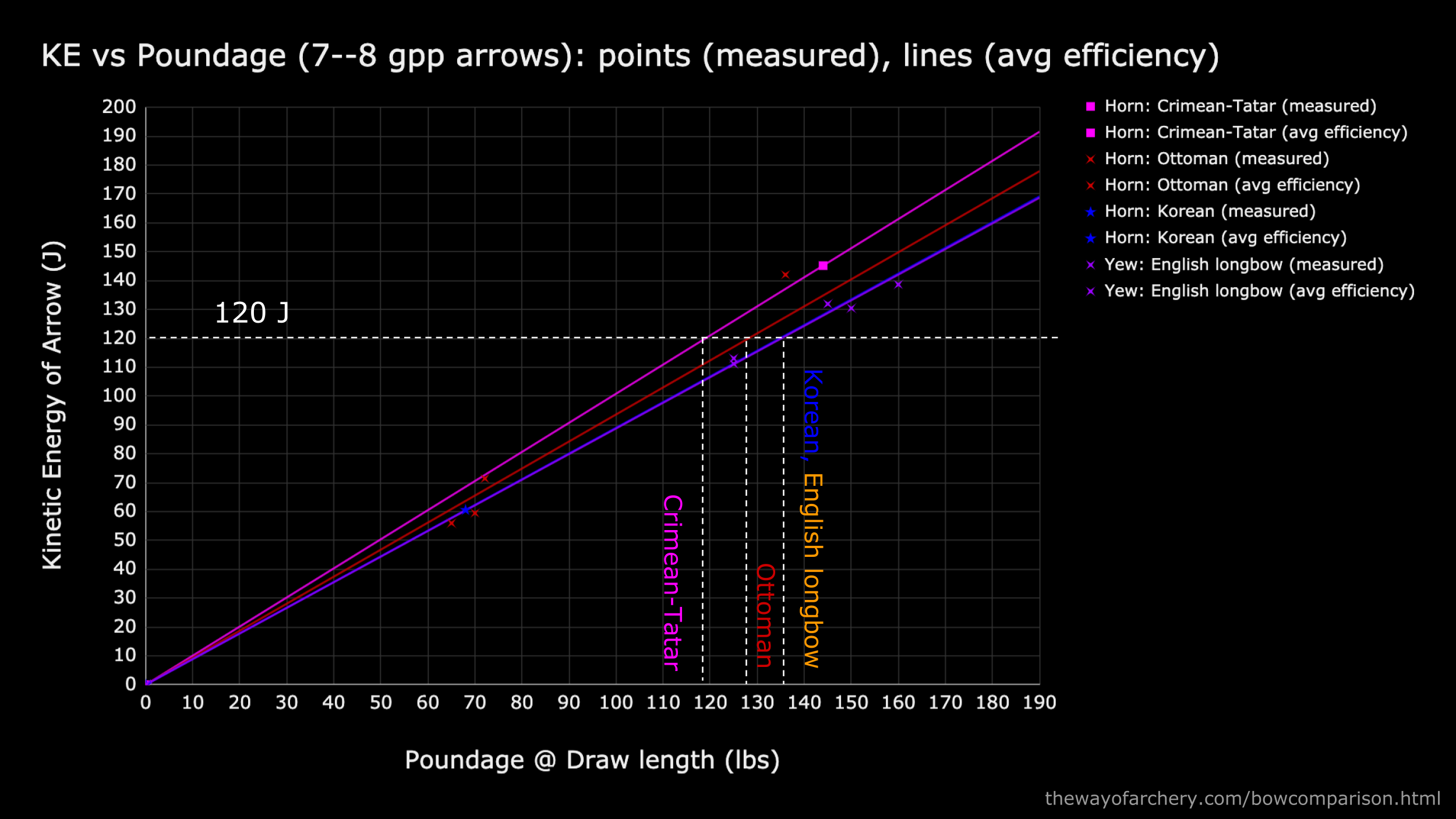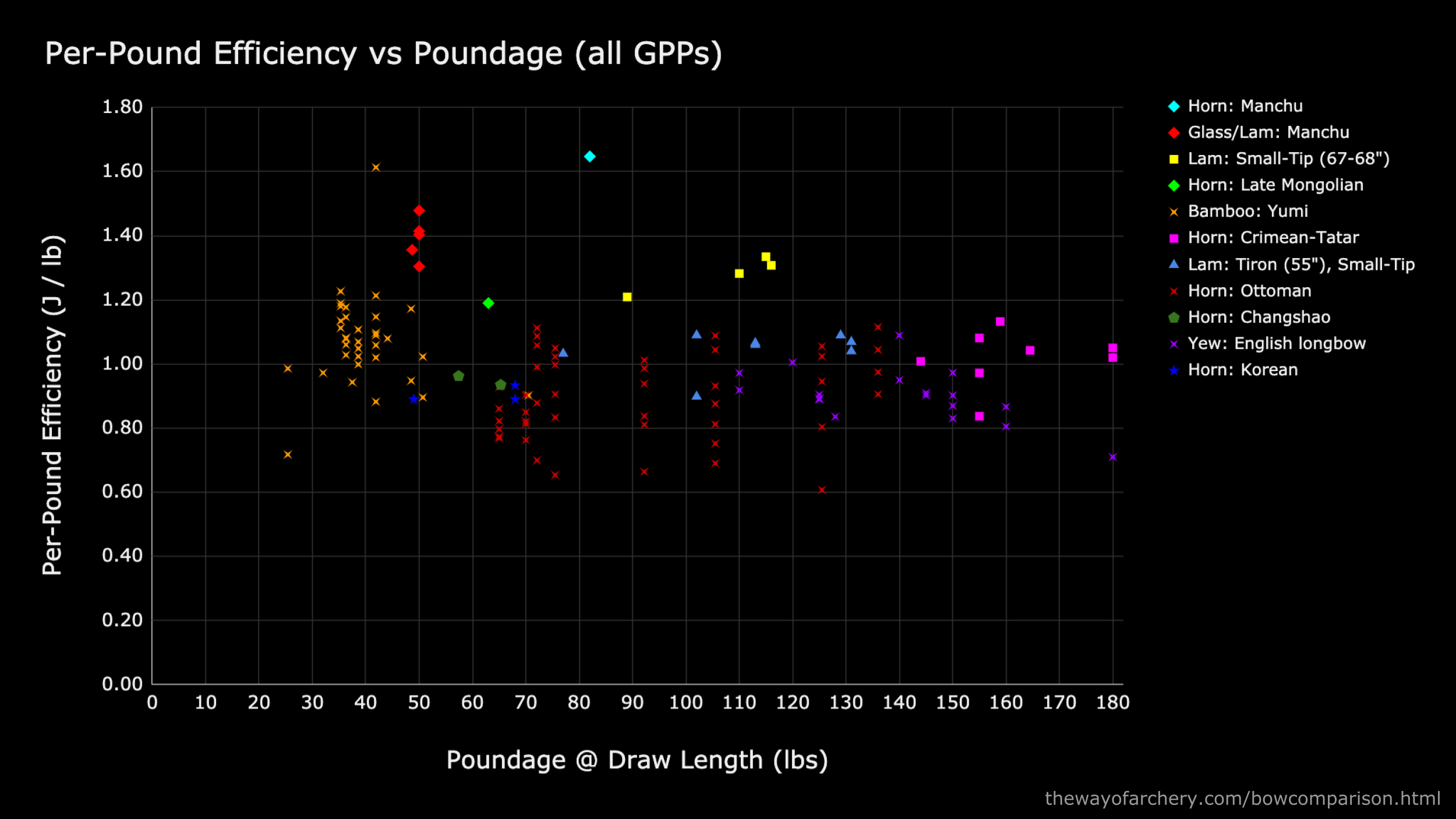Performance by Bow Type
Author: Justin MaOriginaly published: 2021-07-15
Last updated: 2021-07-24
After our episode on "Ming Arrows vs Chinese Brigandine", people asked: "How do your results apply to horn bows?" To answer that question, we introduce a methodology for comparing the expected outputs of different bow types, from horn bows to modern-material Asiatic bows to bamboo and wooden bows.
With current data, we believe our results from the "Ming Arrows vs Chinese Brigandine" episode with synthetic-material Asiatic bows were appropriate stand-ins for horn composite bows. Moreover, we believe that with these comparison graphs we have a better handle on how to compare different bow types to one another (as well as where to fill in the gaps of missing data).
The quality of this comparison is governed by available data. Please help us improve these comparisons by contributing measurement results (bow description, bow poundage, arrow mass, arrow speed, citation).
Background Videos
A New Approach to Comparing the Outputs of Horn Bows vs Modern Bows
Shooting Ming Arrows at Chinese Brigandine
The Main Scoreboard
Consider visiting the full spreadsheet to navigate the data more easily.
"Per-Pound Efficiency vs Arrow GPP" is a graph for comparing the efficiencies of different bow types over a spectrum of arrow masses. This is the main scoreboard.
The Y-axis shows the efficiency of a bow in “joules of kinetic energy per pound of draw weight”. Higher means more efficient.
The X-axis shows the different arrow mass ratios used, expressed in “grains of arrow mass per pound of draw weight”. Light arrows to the left, heavier arrows to the right.
This graph helps you visualize and compare pound-for-pound performance. If we have a 100 lb bow shooting a 1000 grain arrow at 100 joule so kinetic energy, it will have an arrow mass ratio of 10.0 gpp and a per-pound efficiency of 1.0. If we have an 80 lb bow shooting a 800 grain arrow at 96 joules of kinetic energy, it will also have an arrow mass ratio of 10.0 gpp but a higher per-pound efficiency at 1.2.
From the data, you can see how efficiencies change as arrows get lighter or heavier. You can also see how we have very complete data for some bow types, while missing parts of the GPP spectrum suggest areas for further data collection.
Drilling Down
Let's drill down into the data to see what we can observe and to see if there are new questions we can ask.
The widest range of arrow masses belongs to the Ottoman horn bows (indicated in red x’s), so we see a good spread from 2.0 to 20+ gpp. We can observe that efficiency starts to drop as arrows get lighter, and that efficiency appears to plateau at 12.0 gpp and higher.
When we compare this to English longbows made of yew (indicated in purple x’s), we see that the Ottoman horn bows at 4--6 gpp can achieve similar energy outputs as English longbows at heavier ratios (7--9 gpp). Moreover, at the mass ratio of 7--9 grains per pound, Ottoman bows can achieve higher efficiency than English longbows.
This performance gap starts to close as the arrows get heavier approaching 12.0 gpp. We don’t have as much data for longbows at the 12+ gpp range, so the heavier end of the arrow spectrum would be interesting to explore for the longbow.
Crimean-Tatar horn bows, indicated with magenta squares, perform very well with arrows in the 4--12 gpp range. But what happens to the Crimean-Tatar’s performance at gpp’s of 12 to 18 and higher? Does efficiency plateau, or does it improve with heavier arrows?
The Japanese yumi (indicated in orange x’s), on average, has very good efficiency in the 10--15 gpp range. The lone point at 22 gpp and efficiency 1.6 J/lb comes from a 42# yumi shooting a 940 grain arrow at 154 ft/s, or 67 joules of kinetic energy. Does this mean that yumis achieve peak efficiency at that arrow mass? Does this trend hold up for gpp’s in the 16--20 range? What happens to efficiency when yumis are shot with lighter arrows in the 4--8 gpp range?
Finally we have the Manchu bow. The cyan diamond sitting atop the sea of points represents the lone Manchu horn bow measurement we have. At 15 gpp, it can achieve an efficient of 1.65 joules per pound. Data is scarce, but it provides a tantalizing glimpse into the Manchu horn bow’s power and potential. How would it do with lighter or heavier arrows?
The Manchu bows made from synthetic constructions (such as the Jia Zhiwei glass bow or the Mariner Qing-2 laminated bow) are indicated in red diamonds. They have efficiencies of 1.3--1.5 Joules per pound. This suggests that data from the Manchu horn composite bow might not be too much of an outlier. Of course, I am just speculating here. We need more data to answer this question.
The “per-pound efficiency vs gpp” graph helps account facilitates comparisons by visualizing how efficiencies change as arrow mass ratios change. This is good for comparisons but can get a little abstract, especially when we try to drill down and ask the question “what poundage bow do I need to achieve an output of 120 joules?” As it turns out, we can relate the “kinetic energy vs poundage” graph to the “efficiency vs arrow gpp” graph to help answer the question.
It’s hard to find a lot of data for measurements for exactly 10.0 gpp arrows or exactly 15.0 gpp arrows. Instead, we can select a narrow range of similar gpp’s to aggregate a little more data to make a comparison. For example, at 14--15 gpp, we can select those subset of points and replot them on the kinetic energy vs poundage graph. The slope of the lines in the "KE vs Poundage" graph is the average per-pound efficiency of each bow type from the subsample.
Now we can make rough estimates about what poundage bow we need to achieve particular kinetic energy goals. For example, to shoot an arrow with 120 joules of kinetic energy, we would roughly need a 72# Manchu horn bow, a 90# Manchu glass or laminated bow, a 102# bamboo yumi, or a 112# Ottoman horn bow.
At 7--8 gpp, we can select these points for comparison. For these lighter arrows, to shoot an arrow with 120 joules, we would roughly need a 119# Crimean-Tatar horn bow, a 128# Ottoman horn bow, a 136# Korean horn bow, or 136# English longbow.
This plots shows per-pound efficiency vs poundage of the bows for which we have data.
We’re particularly interested in military or war bow draw weights. We have a very broad range of draw weights for Ottoman horn bows and and English long bows. This is great. This suggests efficiency ratios might hold up for different poundages. However, we need more data to confirm.
We don’t have data on heavy bows for other bow types, such as the Tang Changshao horn composite bow (shown with green pentagons, measured in the 55--70# range), the Korean horn composite bow (shown with blue stars, measured in the 50--70#), and the Japanese yumi (shown in orange x’s, consisting of measurements in the 30--50# range, with a lone measurement at 70#).
We’re trying to understand what historical, military-weight versions of these bows could do. Graphs like this can tell us which bow poundages are missing from the data set.
We hope you find this discussion useful and that it can spur new ideas. Perhaps it may inspire you to build war bows using natural constructions, or perhaps collect new measurements on natural and synthetic material versions of traditional bows. Again, the quality of these comparisons improves only if we can get more data.
